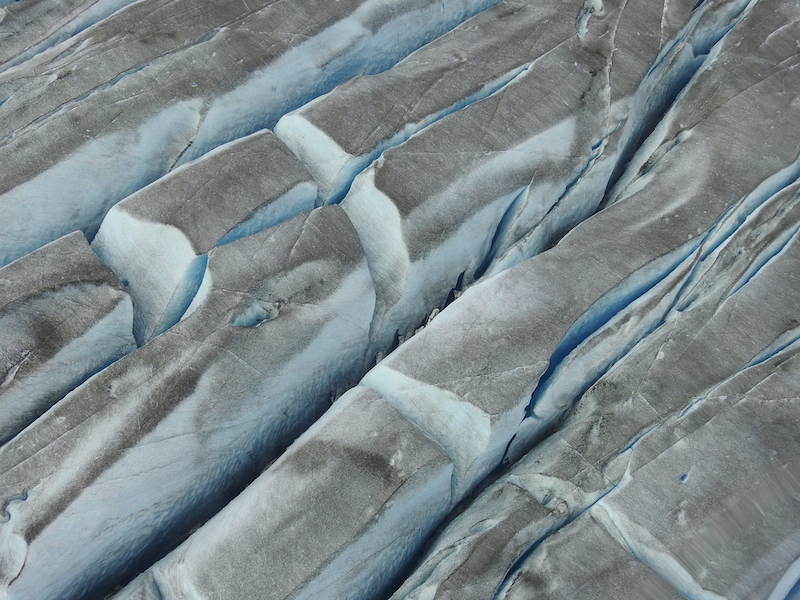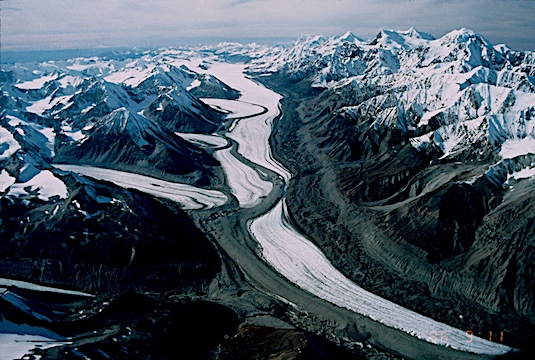Glacier MovementOnce the ice reaches a thickness of about 20 meters (66 ft) it will
begin to move under the pressure of its weight. Glaciers move across the surface by internal deformation and basal slip. Under the weight of accumulating ice,the ice
is deformed and
begins to move by pseudo-plastic flow. Glaciers slip over the surface lubricated by meltwater
at their base. Generally speaking, flow velocity in a glacier is
greatest near the surface of the ice and decreases towards the bottom.
The surface moves faster than the base does due to internal deformation
and basal slipping. The actual forward movement of a particle of ice in
the glacier is about 1,000 feet per year. A typical glacier will move at
about 10 inches a day, though some move more rapidly like
Greenland's Jakobshavn glacier. [
Figure 19.6 Crevasses on Taku Glacier, Alaska(Image by Melissa Mahon from Pixabay) A glacial surge occurs as an abrupt movement that can cover tens of meters per day. The exact cause is not well-known, but may result from water pressure building at the base which "floats" the glacier. In 1986 the Hubbard Glacier surged across the mouth of the Russell fjord in Alaska cutting it off from Yakut Bay. Glacier movement exceeded 112 feet per day, compared to a normal rate of 10 inches per day! The Black Rapids Glacier, AK in Figure19.7 is a surging glacier. Tributary glaciers enter the main valley from the left. Massive amounts of glacial sediment have been deposited along the sides of the glacier and up against the valley walls. The tell-tale sign of a surging glacier are the looped moraines that snake their way across the ice.
Figure19.7 Black Rapids Glacier. Alaska
|


